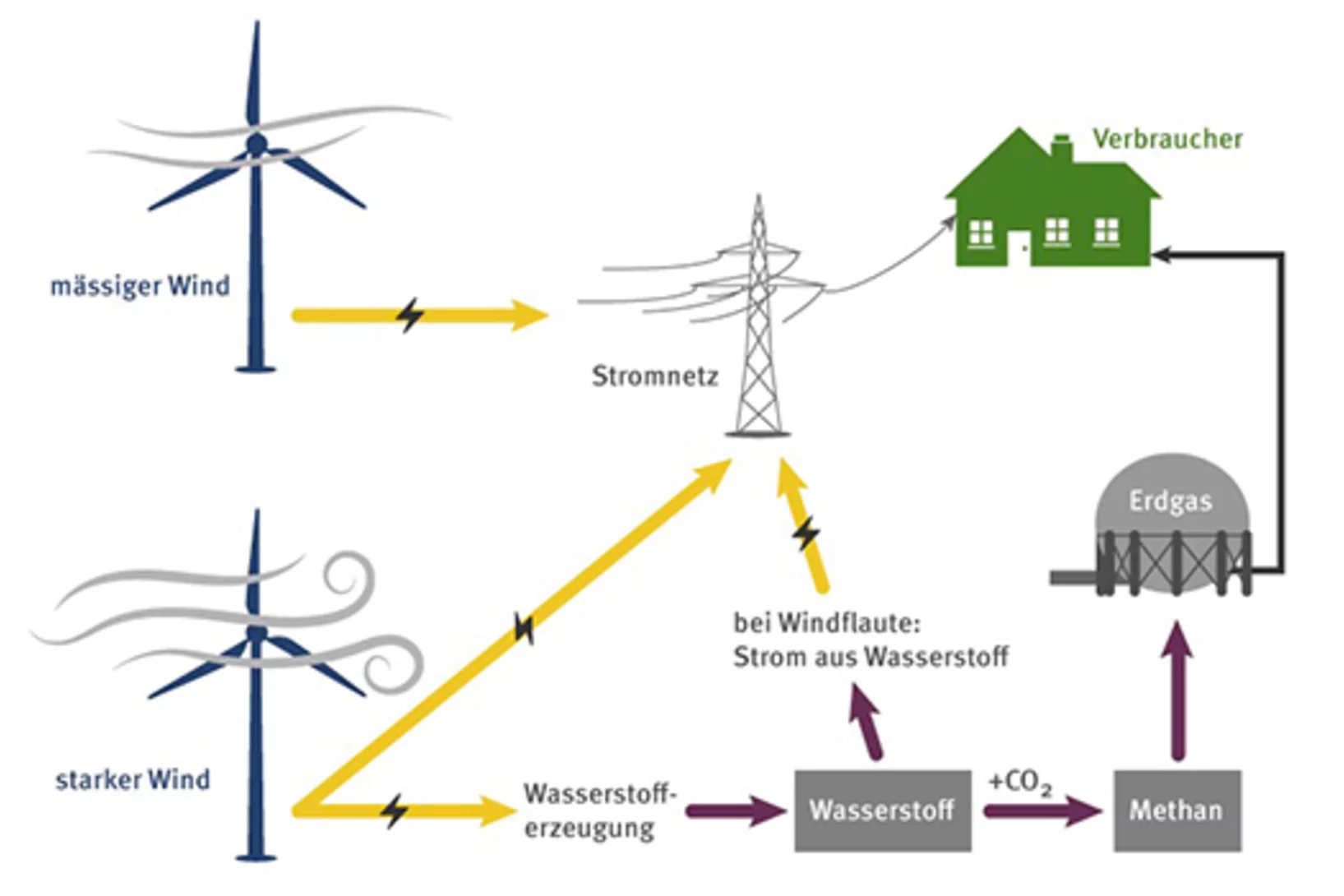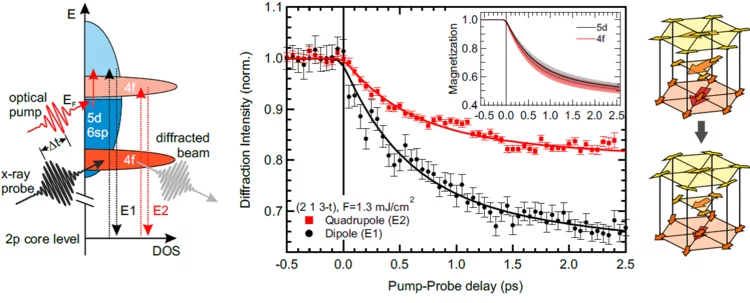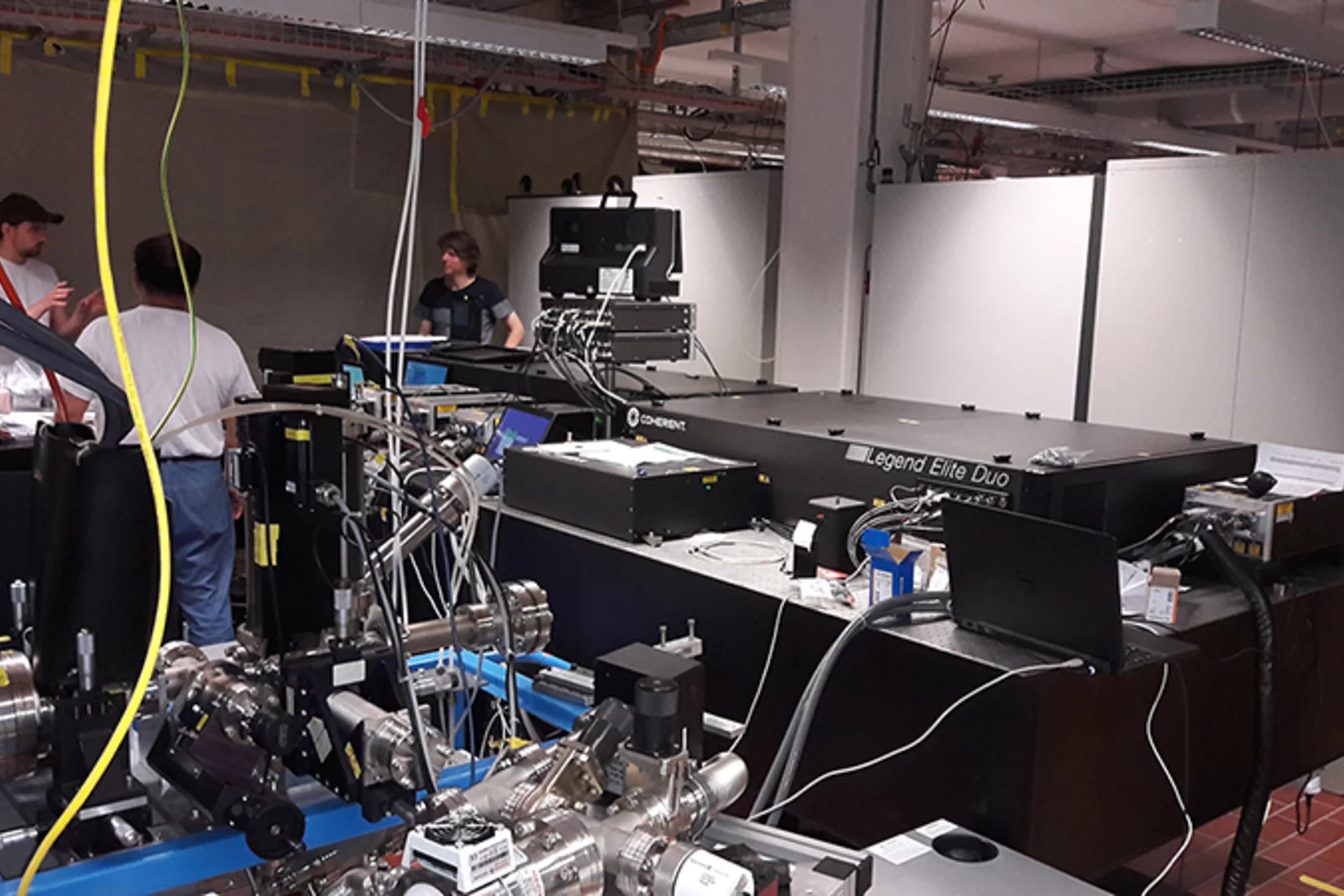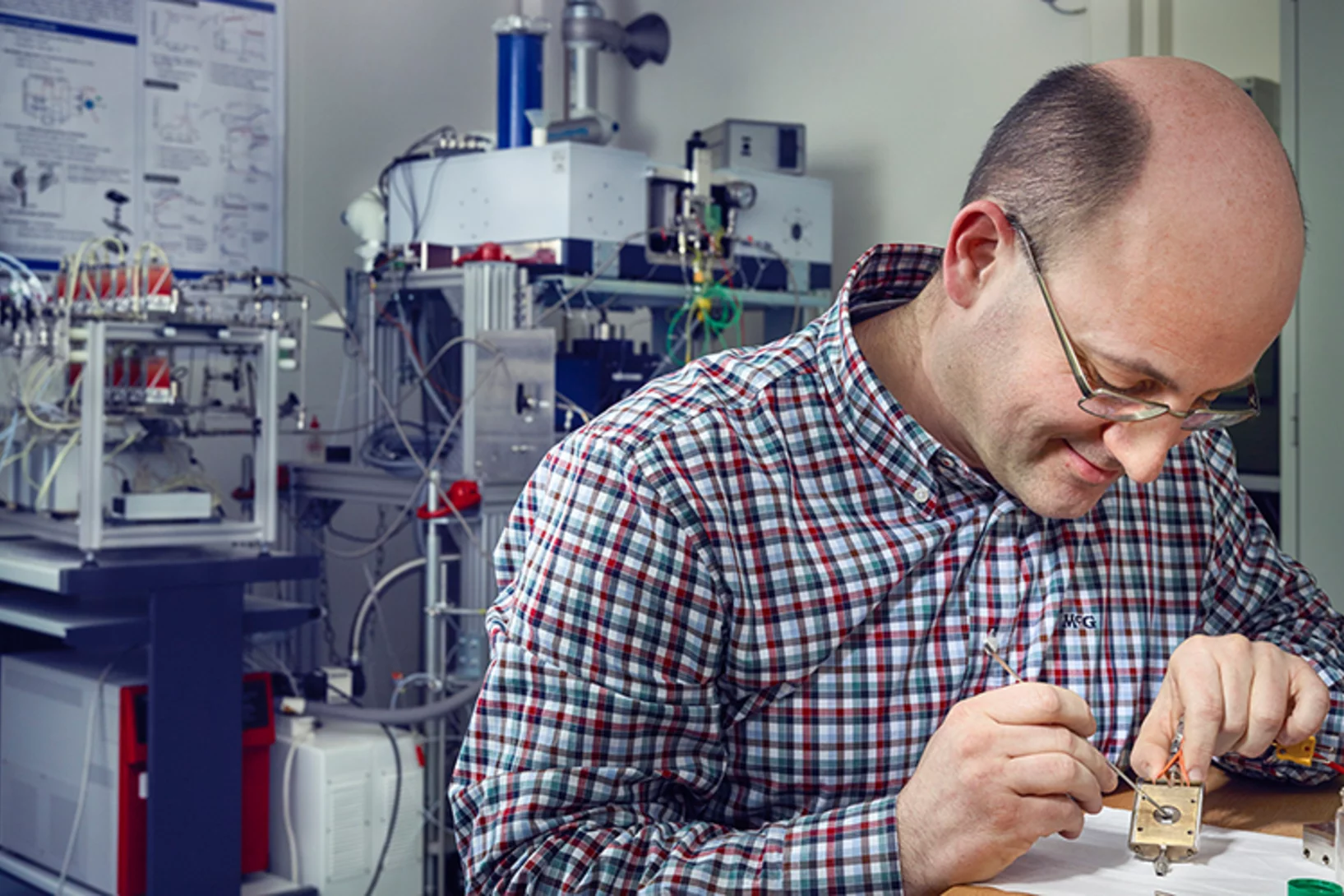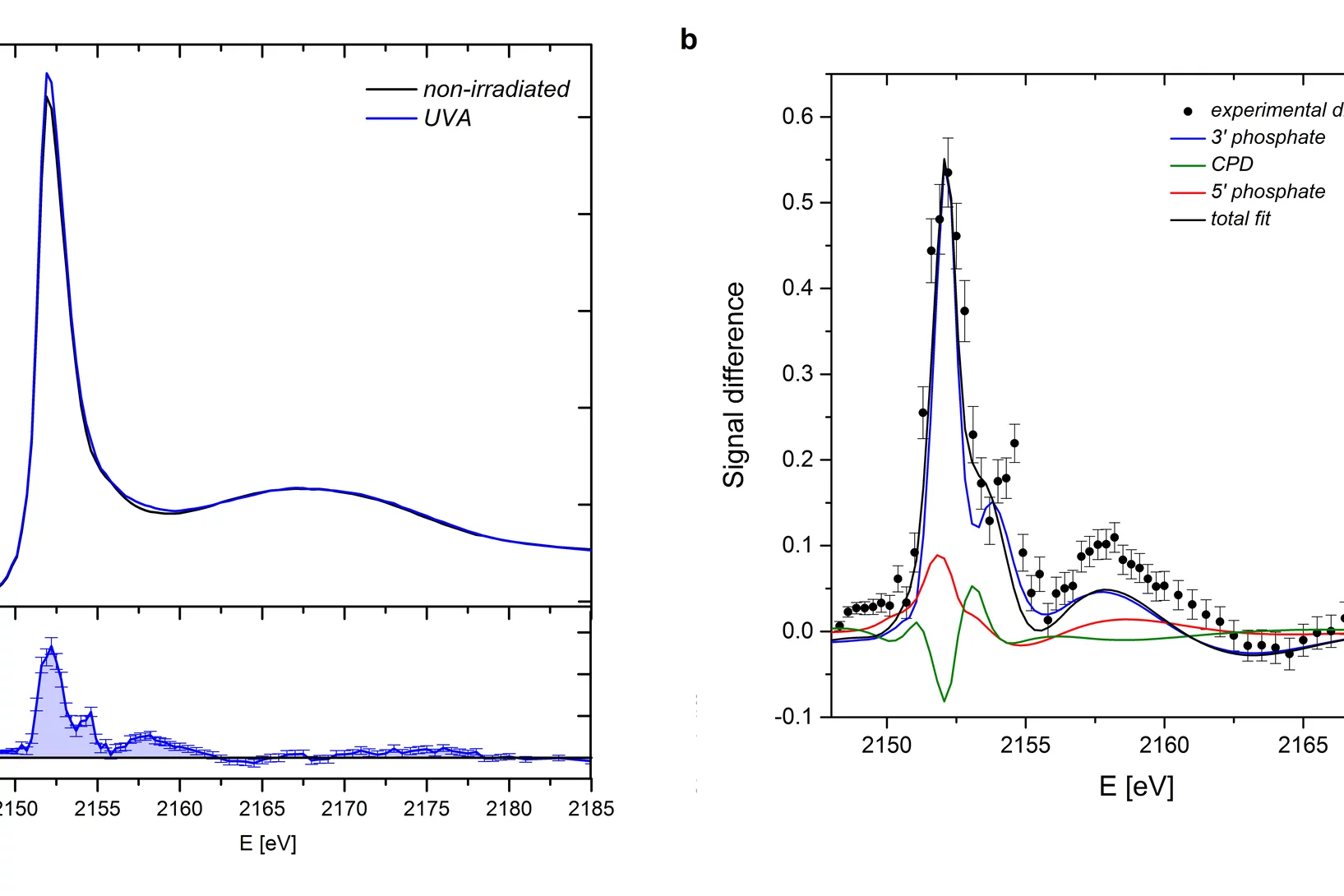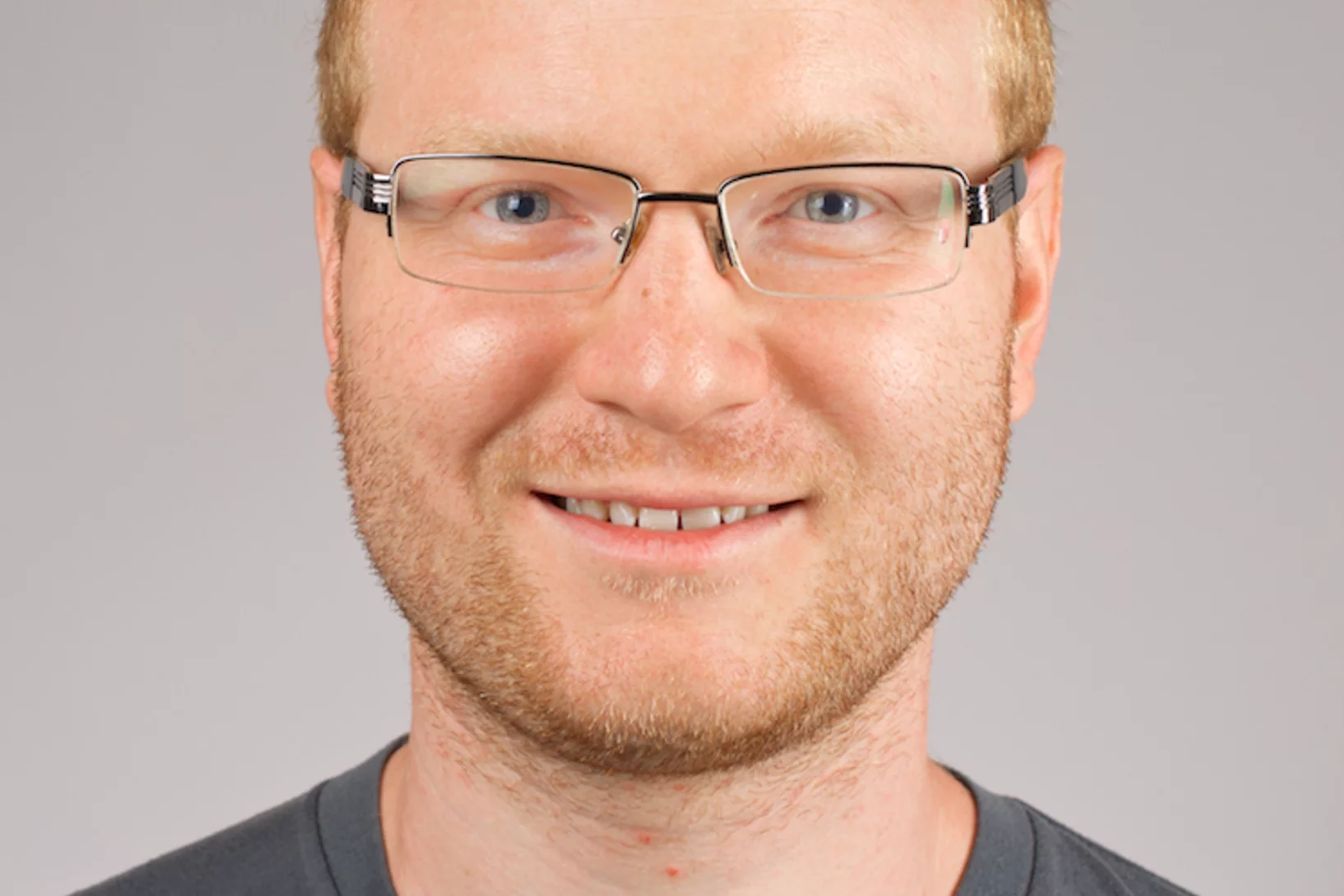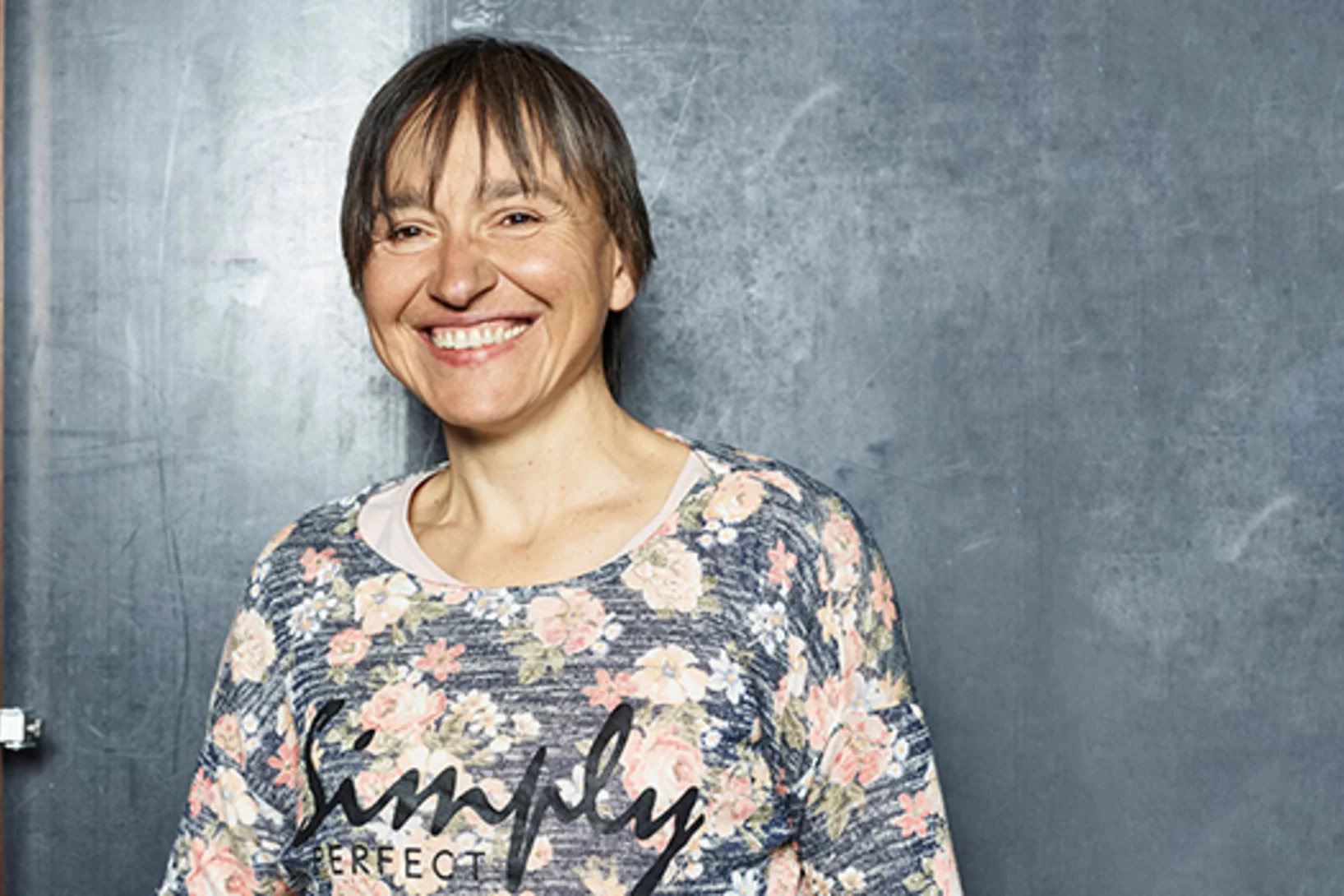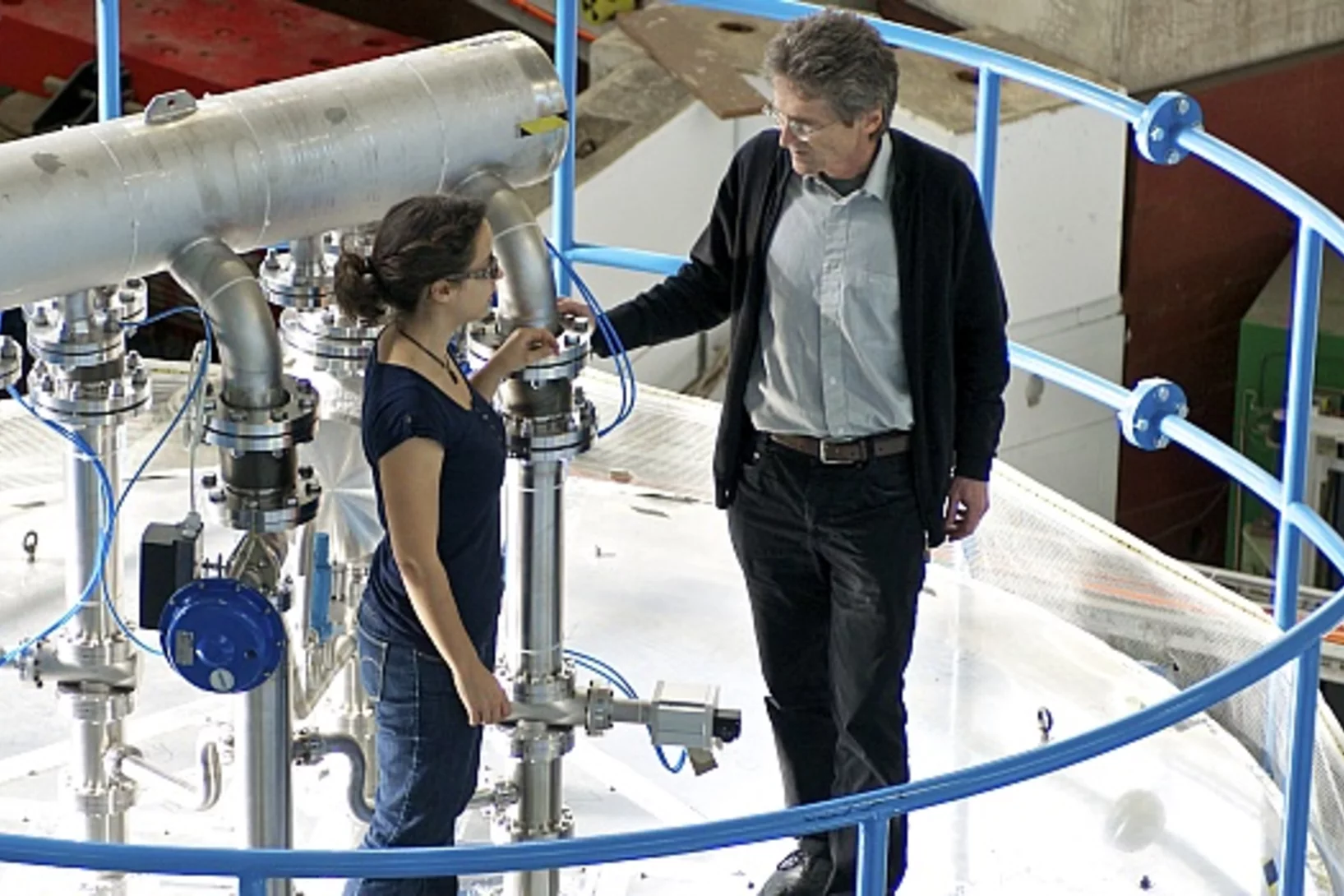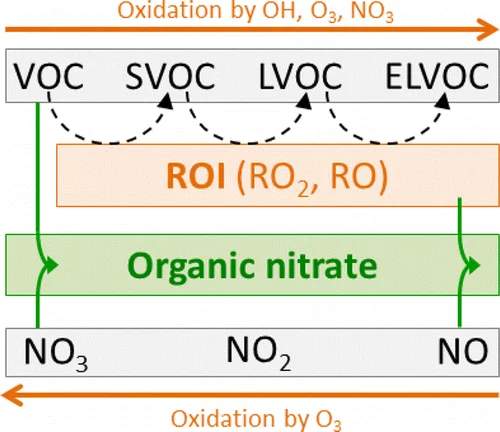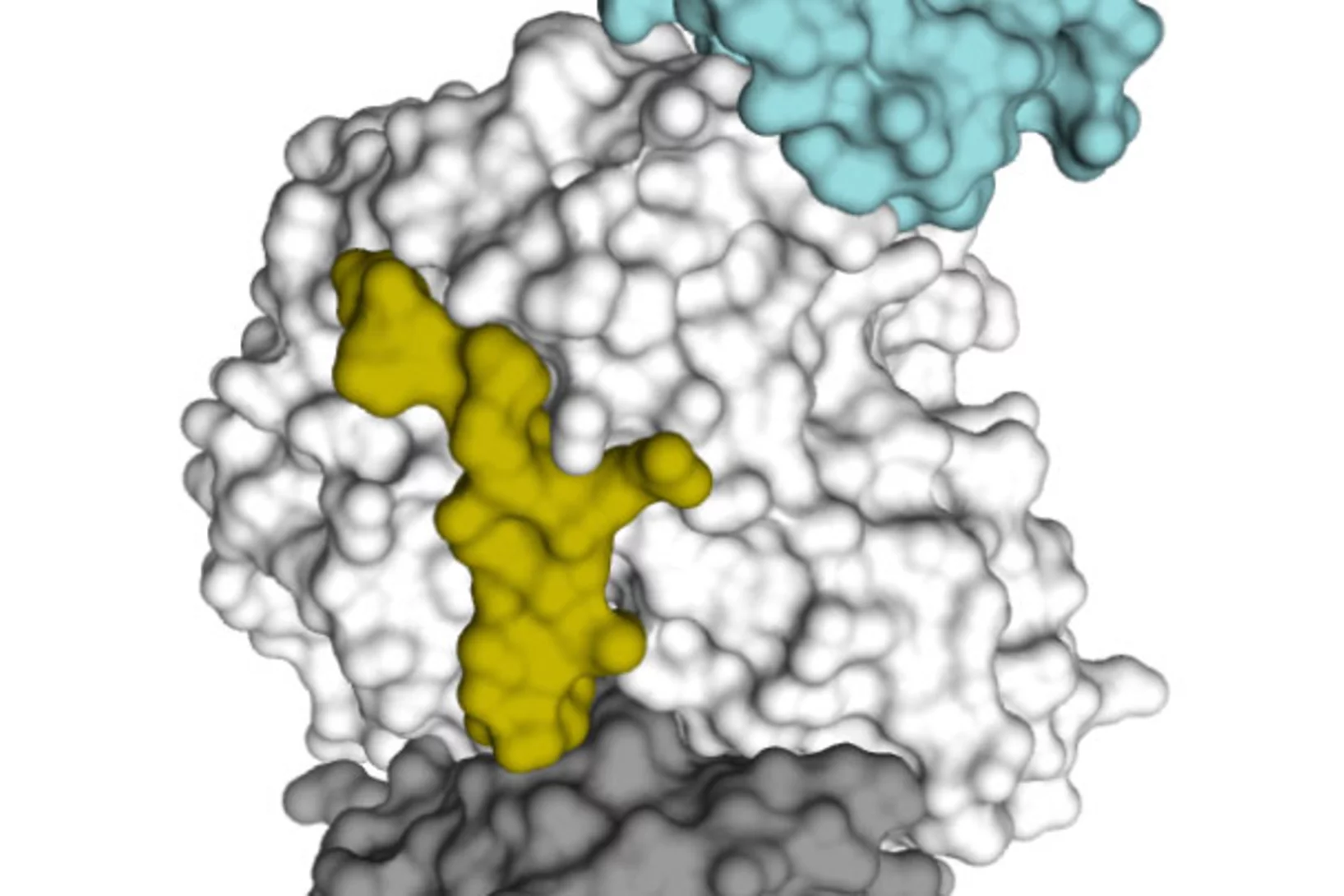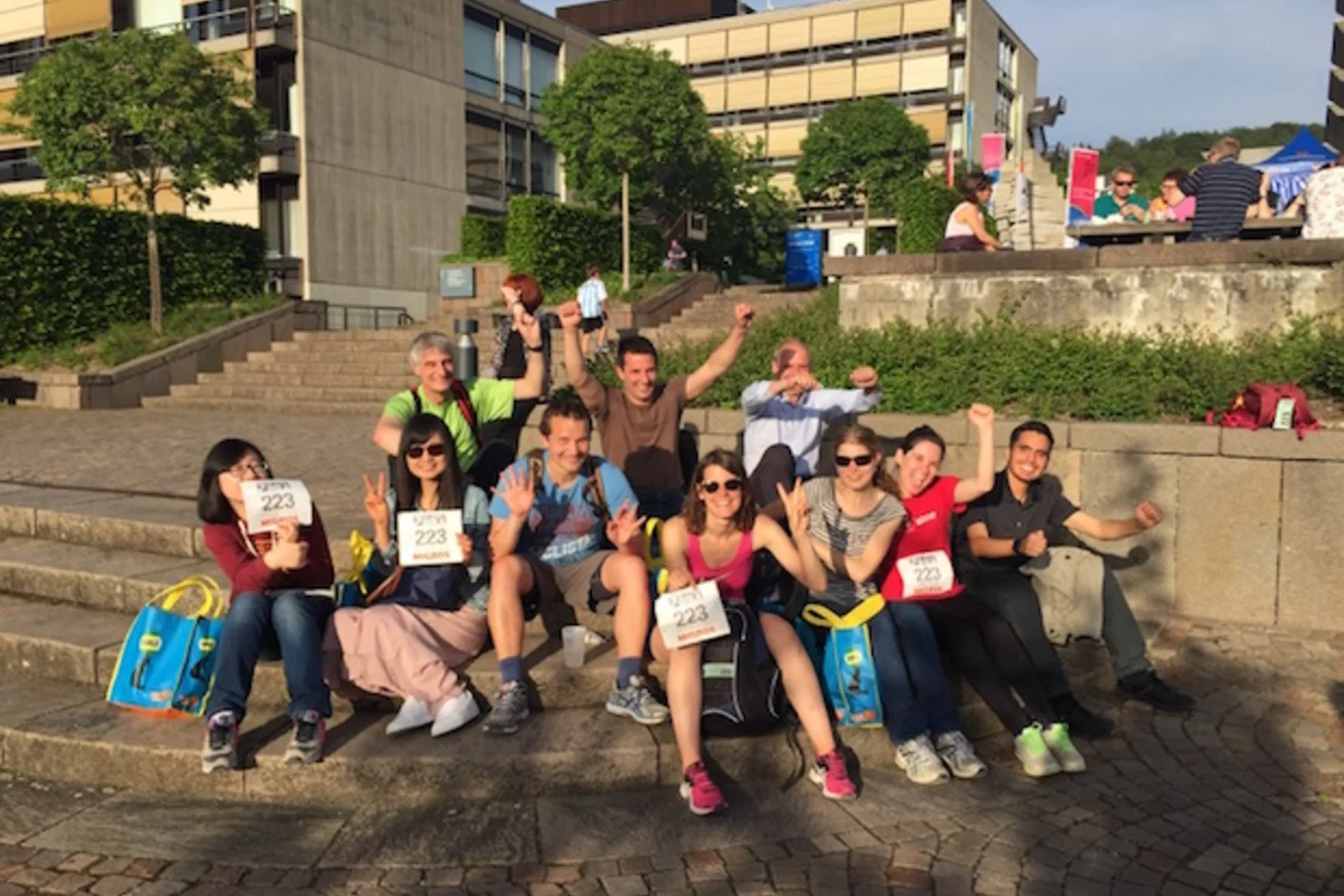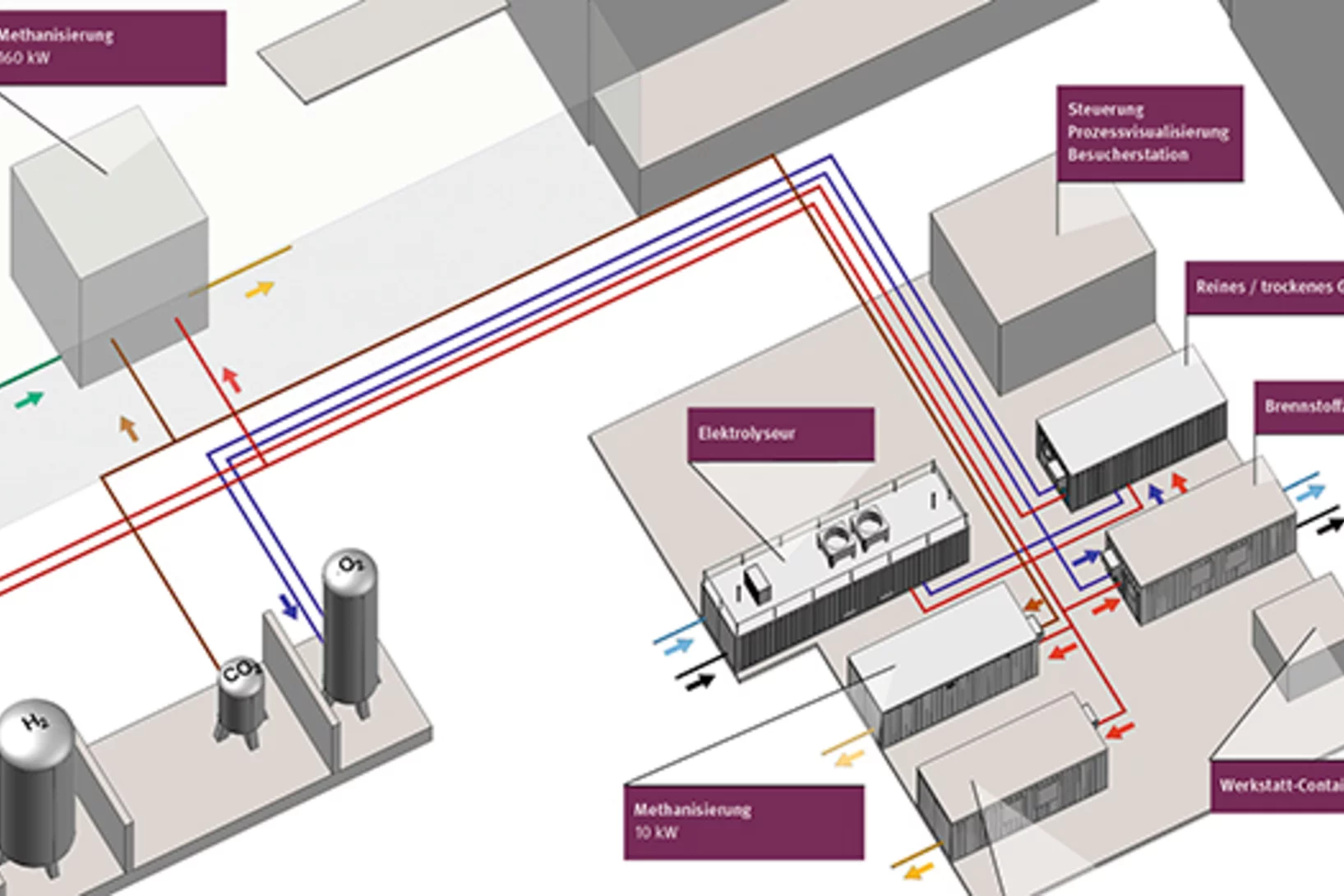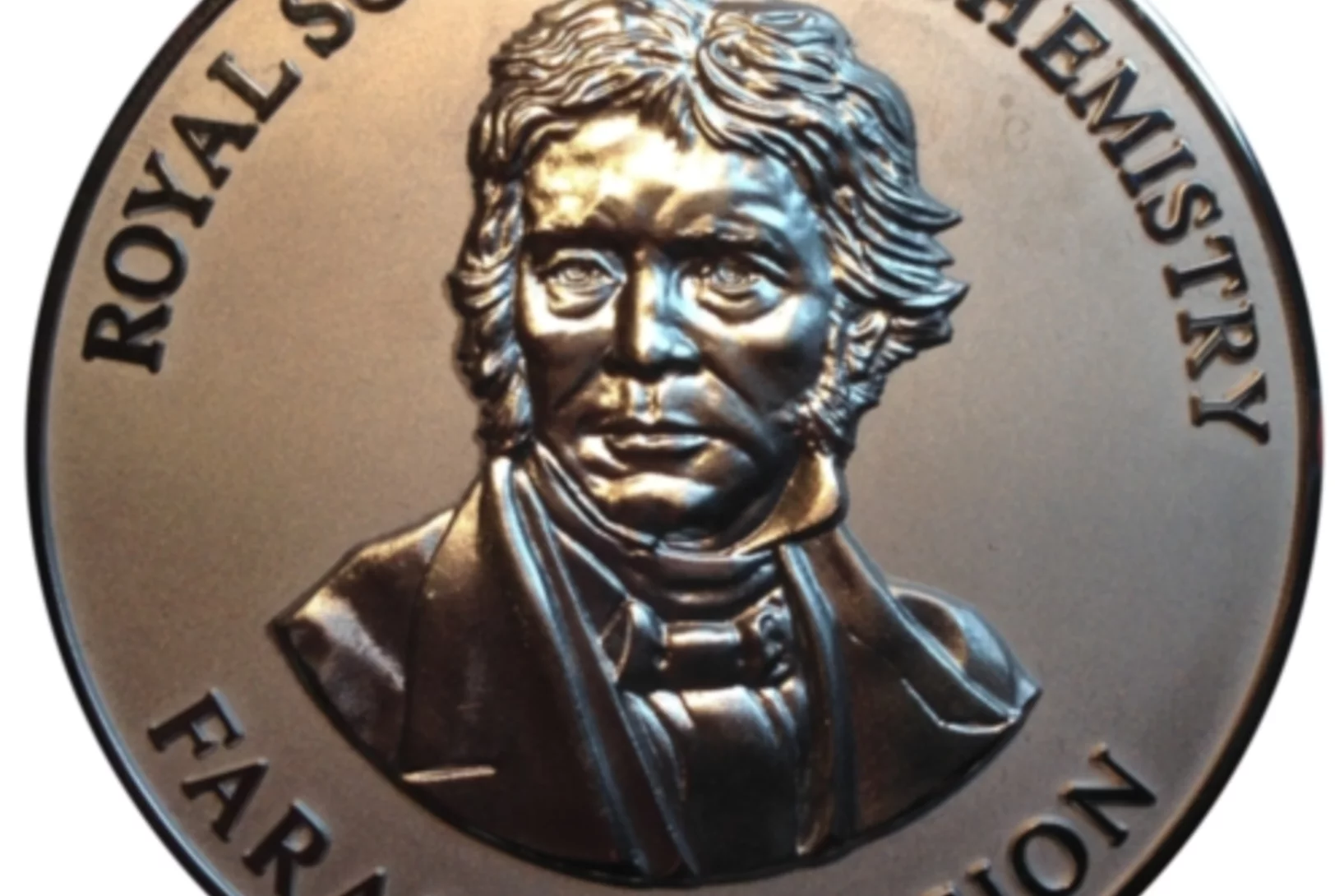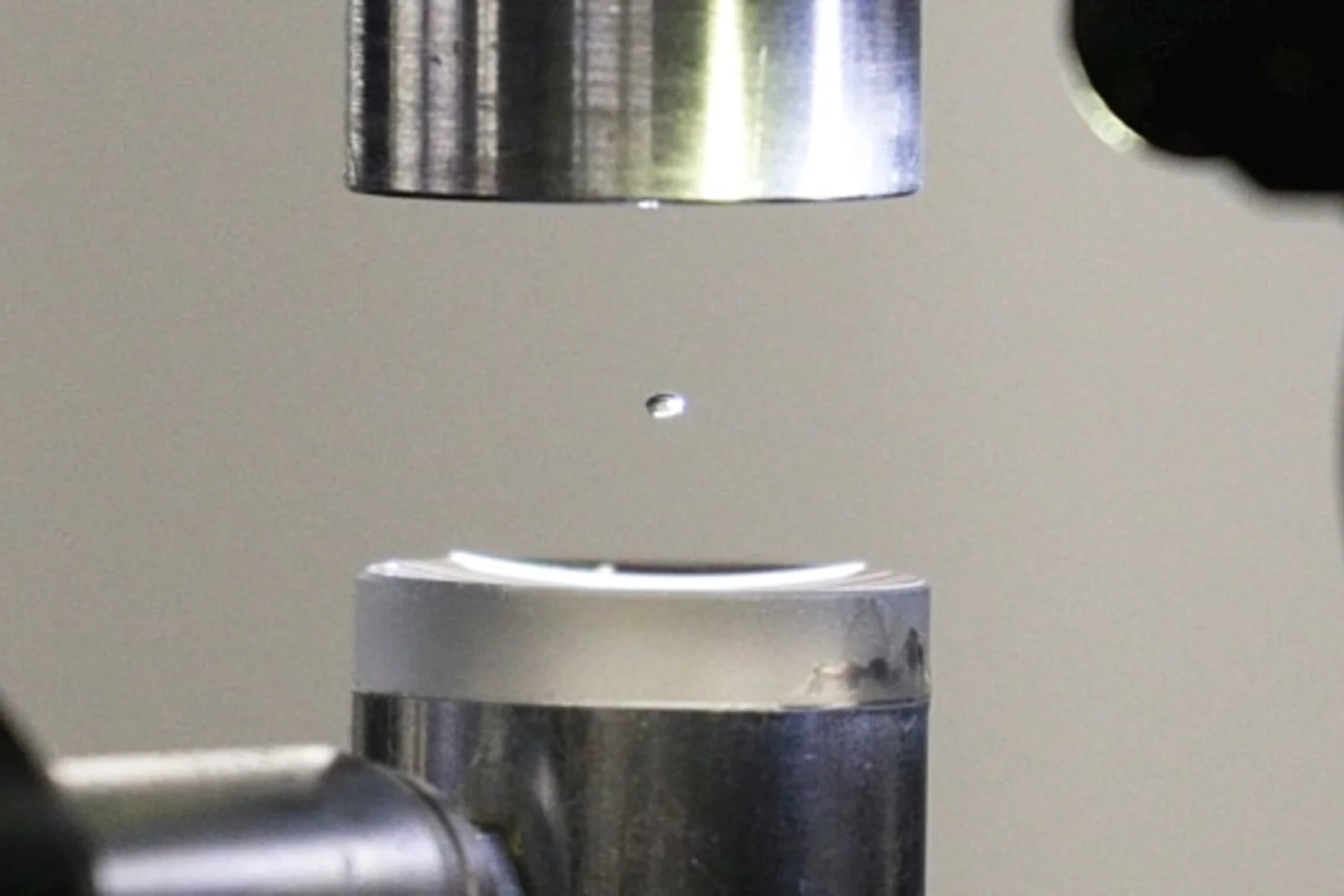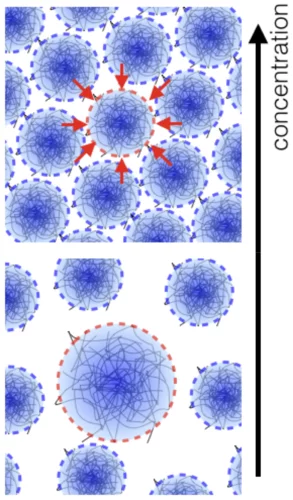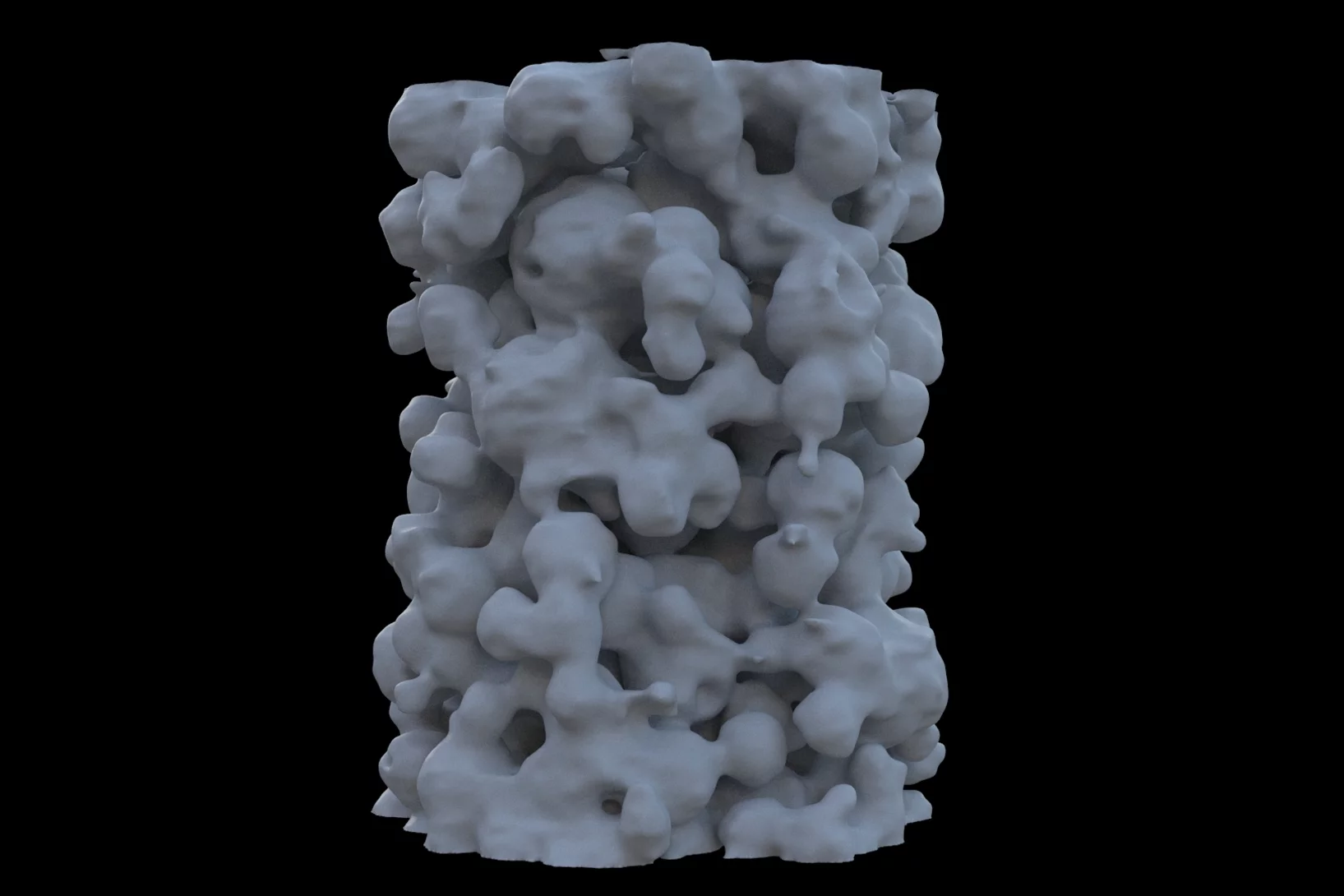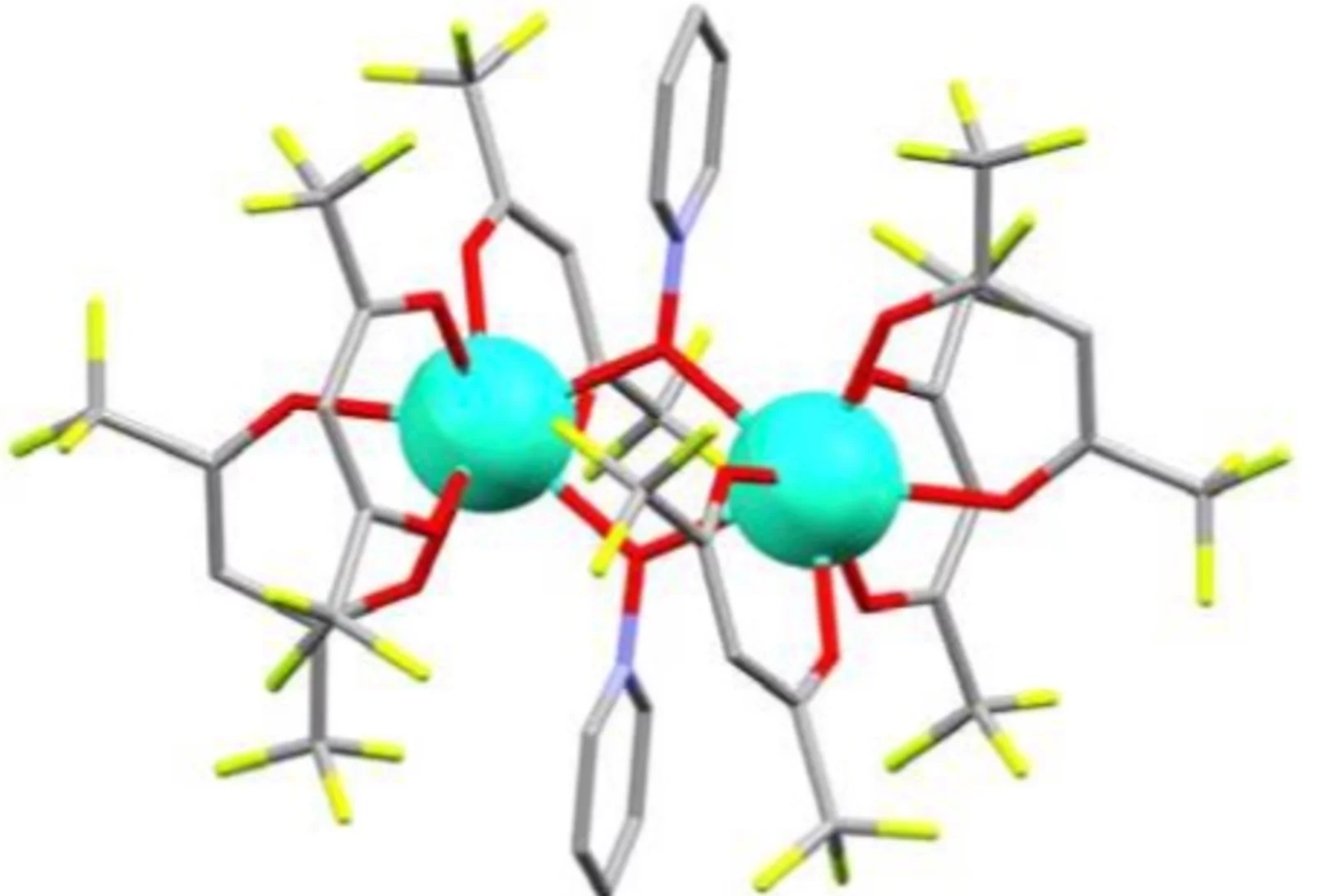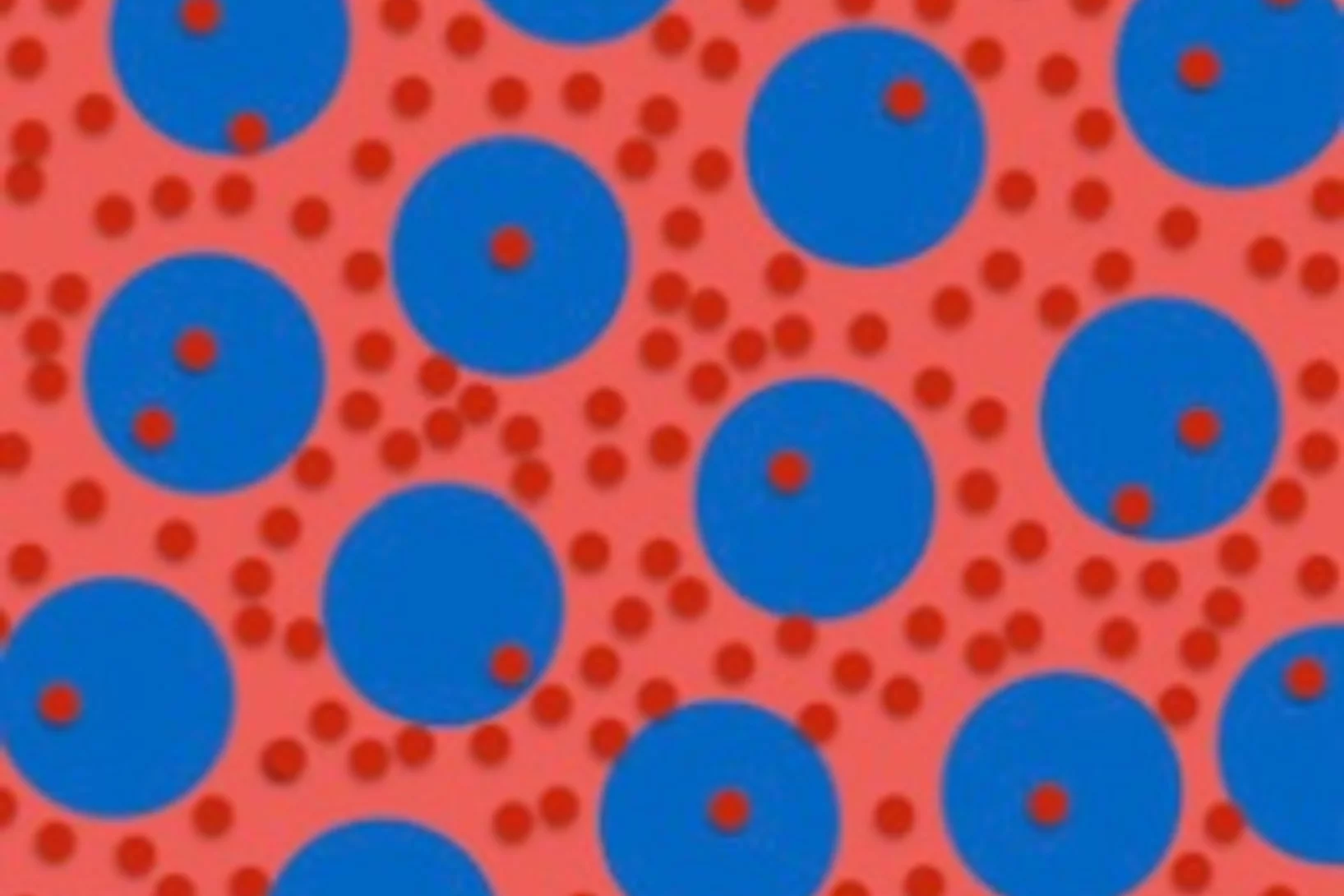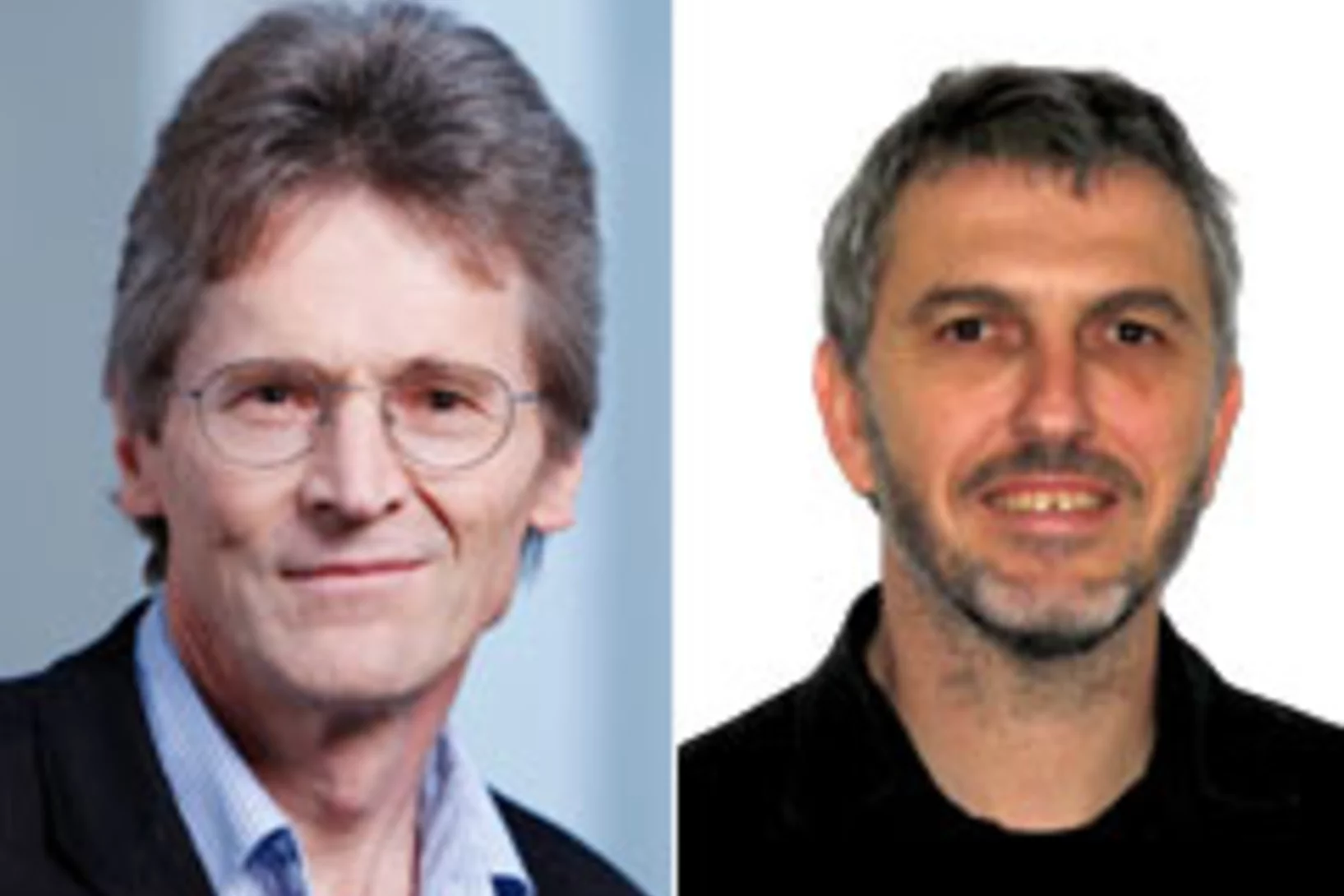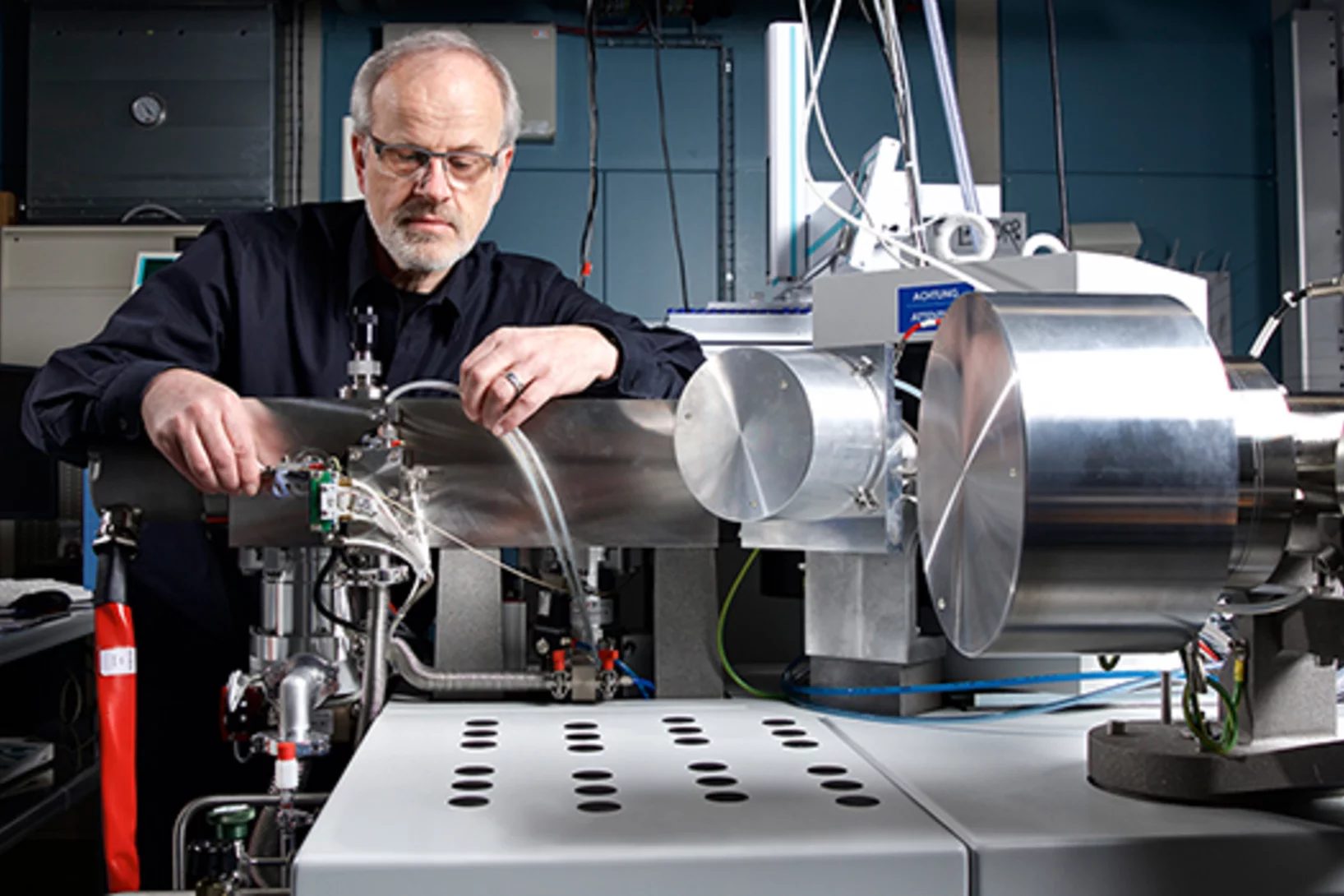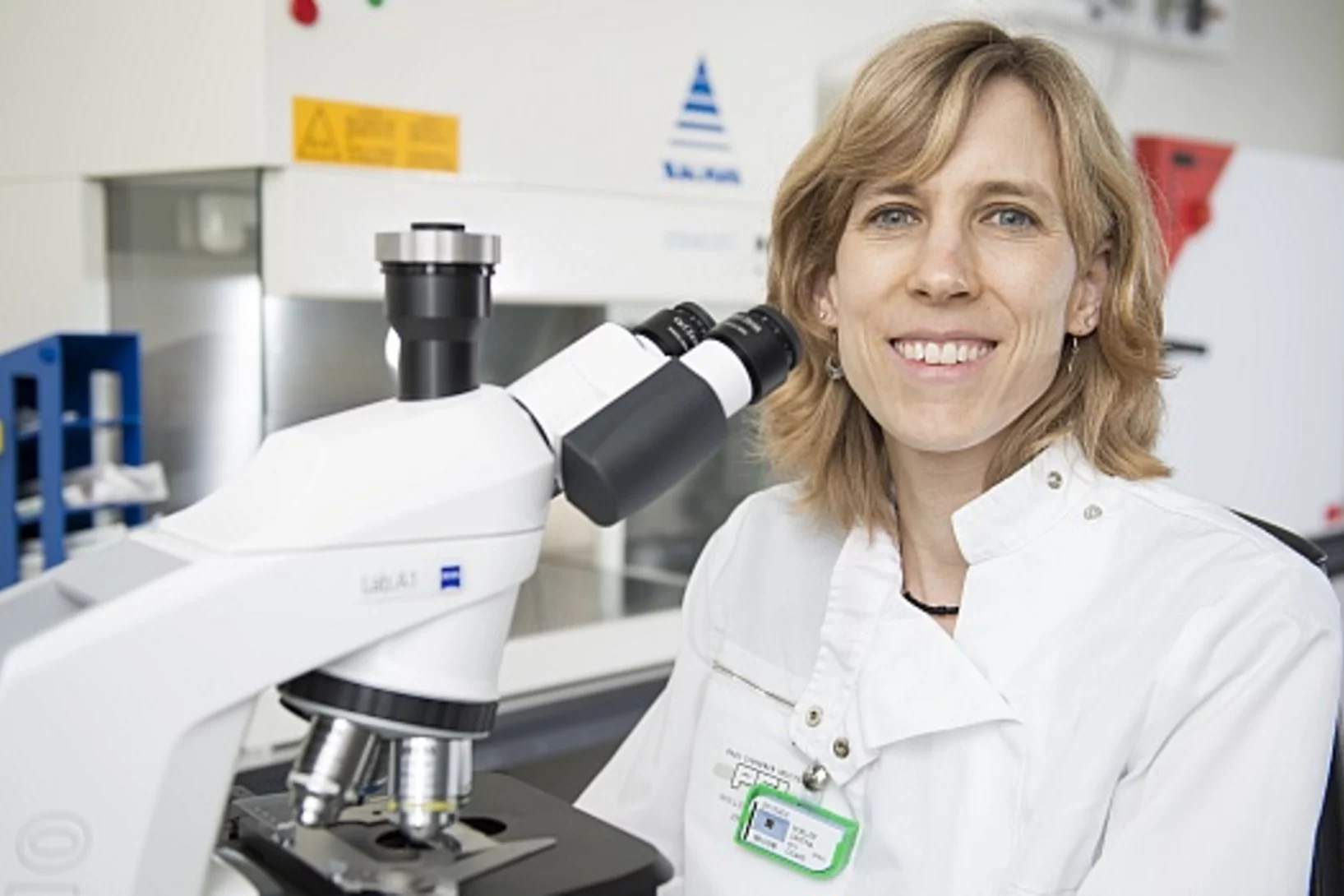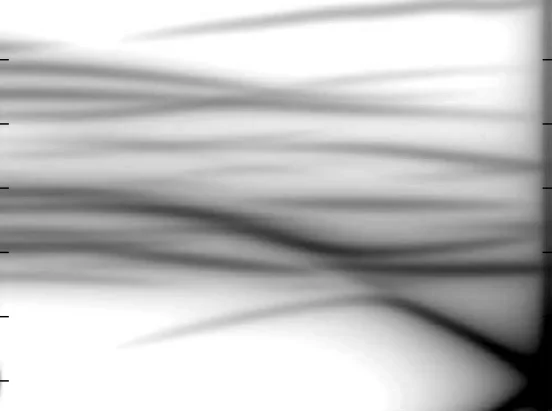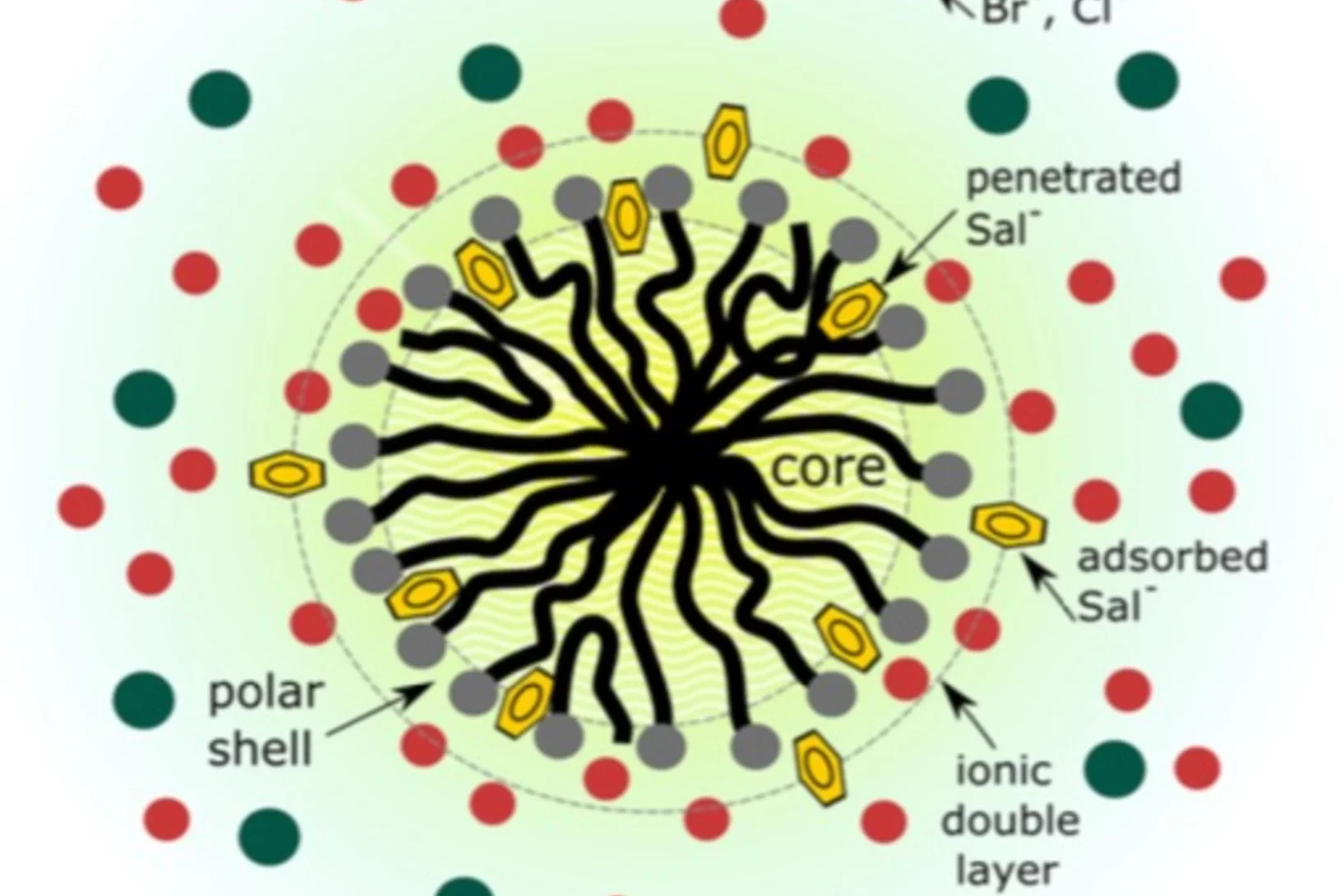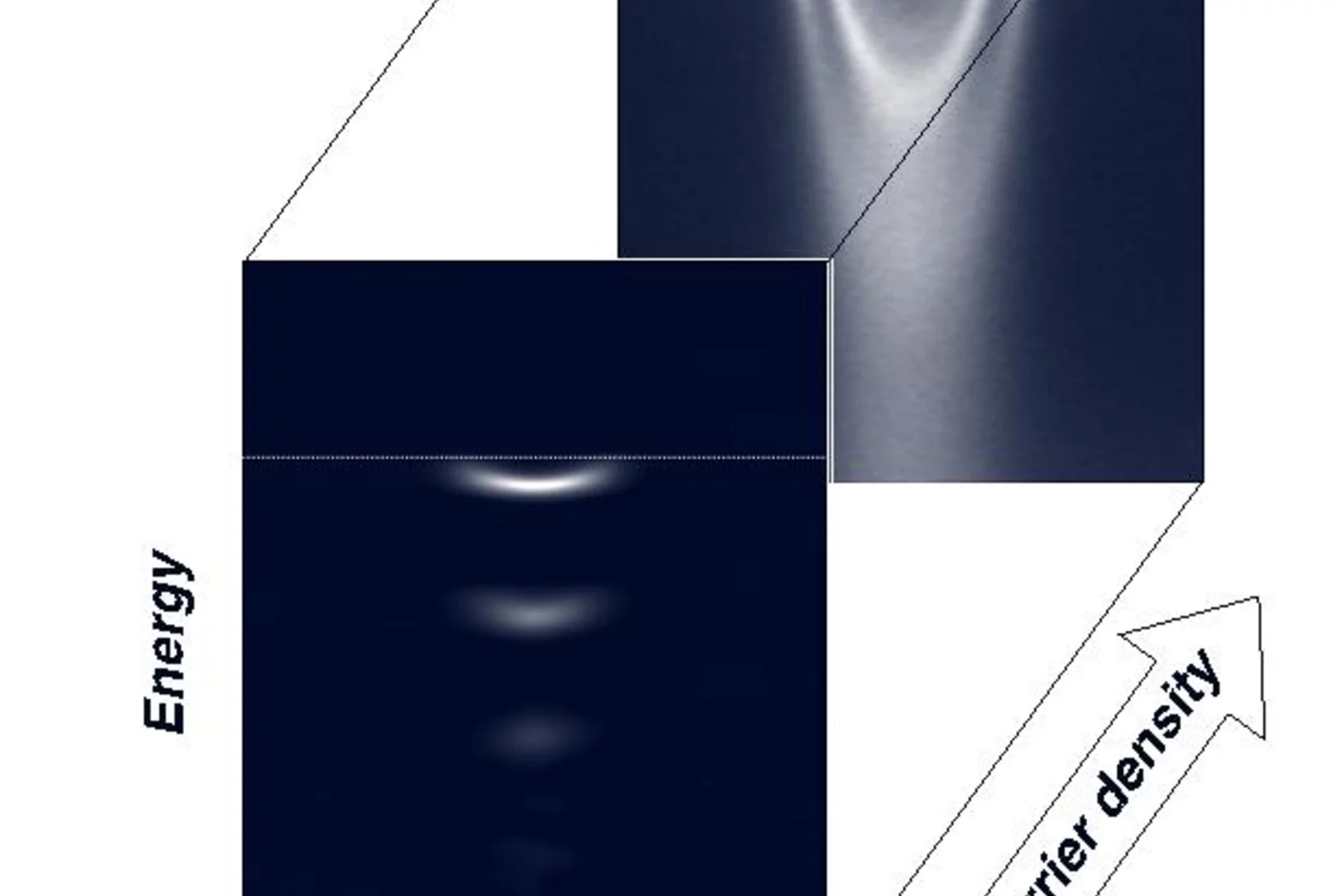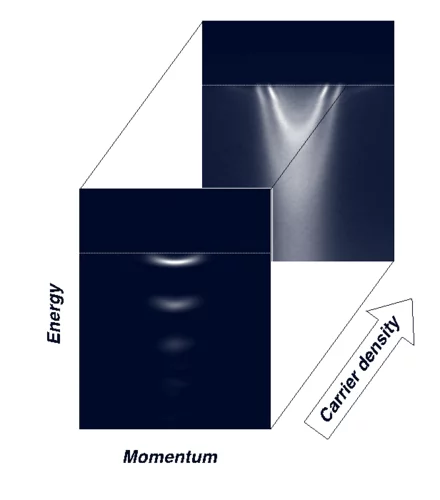Researchers at the Paul Scherrer Institute PSI are looking for answers to essential questions concerning the underlying structures of matter and the fundamental principles of nature. They study the composition and properties of elementary particles – the smallest building blocks of matter – or investigate the structure of biological molecules and how they perform their function. The knowledge gathered in this way opens up new approaches to finding solutions in science, medicine and technology.
Find out more at Overview Fundamentals of Nature
To starve a tumour
PSI researcher Kurt Ballmer-Hofer is concerned with the question of how tumours could be starved by preventing the development of blood vessels. After 40 years of research that yielded many fundamental insights about the formation of blood vessels, one of the key molecules has been found; further research is expected to enable clinical applications.
Turning Electricity into Gas – and back into Electricity
As capacities for producing solar and wind energy increase, integrating these into the existing energy system is becoming more of a challenge. The ESI platform is testing methods for successful integration. The answer: storing surplus energy as gas.
Itinerant and Localized Magnetization Dynamics in Antiferromagnetic Holmium
Resonant magnetic scattering performed at the x-ray free electron laser facility LCLS (USA) has been used to investigate the magnetization dynamics of elemental Holmium. It is found that the demagnetization of conduction electrons and localized 4f magnetic moments have the same temporal evolution showing a strong coupling between the different magnetic moments.
First light from the SwissFEL Experimental Laser
The SwissFEL Experimental Laser 1 has successfully been delivered and installed in a temporary laser lab by Coherent, from where it will be moved to SwissFEL by end of 2016. The pre-installation in the temporary laser lab allows to become acquainted with the system, to set up a full monitoring and diagnostics system and to debug potential problems in the next months.
High-performance catalytic converters for natural-gas vehicles
Natural-gas vehicles are on the way, and they need catalytic converters for the exhaust too. While work is under way at Empa, the Swiss Federal Laboratories for Materials Testing and Research, to optimise natural-gas engines and catalytic converters, the PSI is specialising in research methods that enable very precise observation of catalytic converters. For this work, the PSI researchers have now developed a universal measurement chamber in which catalytic converters can be studied with a variety of different analytical methods, yet always under the same conditions.
One atom at a time
At the PSI, the Heavy Elements Research Group explores the exotic, unstable atoms at the end of the periodic table of elements. The dream: to discover one day the island of stability that could exist beyond the elements charted so far on the chemists' map.
Investigating DNA Radiation Damage Using X-Ray Absorption Spectroscopy
The key to achieving more effective radioprotection and radiotherapy is to understand the exact mechanism of the interaction between radiation and biomolecules, and in particular to obtain the precise structure of the different forms of damage and their relative ratios. Among all biomolecules exposed to radiation, DNA plays an important role because any damage to its molecular structure can affect the whole cell and may lead to chromosomal rearrangements resulting in genomic instability or cell death.
Welcome Dr. Peter Alpert
We warmly welcome Dr. Peter Alpert in the Laboratory of Environmental Chemistry joining the Surface Chemistry group as of 1st June 2016. Peter Alpert has received his PhD at Stony Brook University and has been a postdoc at CNRS-IRCELYON in France. Peter Alpert will strengthen the group’s activities in application of Scanning Transmission X-ray Spectromicroscopy (STXM) in a CROSS project with the SYN department (PolLux beamline and Laboratory of Micro- and Nanotechnology) to develop a new generation of environmental cells.
Zebra - a new instrument for the PSI
Interview with Oksana ZaharkoNew scientific questions demand ever better experimental equipment. In this interview, PSI researcher Oksana Zaharko reports on the challenges of setting up a new instrument for research with neutrons.
Present-day measurements yield insights into clouds of the past
Researchers have shown how fine particles are formed from natural substances in the atmosphere. These findings will improve our knowledge about clouds in the pre-industrial era and thus will contribute to a more accurate understanding of both the past and future evolution of our climate.
Organic Nitrate Contribution to New Particle Formation and Growth in Secondary Organic Aerosols from α-Pinene Ozonolysis
The chemical kinetics of organic nitrate production during new particle formation and growth of secondary organic aerosols (SOA) were investigated using the short-lived radioactive tracer 13N in flow-reactor studies of α-pinene oxidation with ozone. Direct and quantitative measurements of the nitrogen content indicate that organic nitrates accounted for ∼40% of SOA mass during initial particle formation, decreasing to ∼15% upon particle growth to the accumulation-mode size range (>100 nm). Experiments with OH scavengers and kinetic model results suggest that organic peroxy radicals formed by α-pinene reacting with secondary OH from ozonolysis are key intermediates in the organic nitrate formation process
Centriolar CPAP/SAS-4 Imparts Slow Processive Microtubule Growth
Centrioles are fundamental and evolutionarily conserved microtubule-based organelles whose assembly is characterized by microtubule growth rates that are orders of magnitude slower than those of cytoplasmic microtubules. Here, we bring together crystallographic, biophysical, and reconstitution assays to demonstrate that the human centriolar protein CPAP (SAS-4 in worms and flies) binds and "caps" microtubule plus ends by associating with a site of β-tubulin engaged in longitudinal tubulin-tubulin interactions.
LUCky Sola Team
The Radiowanderer stroke again: A team of 14 runners from the Laboratory of Environmental Chemistry (LUC) and the Laboratory of Radiochemistry (LRC), as well as a number of external friends and supporters, happily and successfully finished the 43rd Sola event in Zürich. The total distance summed up to 116 km and 2580 m in altitude. Congratulations to the runners!
Structure of the ESI Platform
The road to a sustainable energy future leads through the integration of new renewable energy sources, from the sun, the wind, or biomass. Using the Energy System Integration or ESI Platform, research and industry can test promising approaches in all their complex connections and interrelations.
Dimensional Reduction in Quantum Dipolar Antiferromagnets
We report ac susceptibility, specific heat, and neutron scattering measurements on a dipolar-coupled antiferromagnet LiYbF4. For the thermal transition, the order-parameter critical exponent is found to be 0.20(1) and the specific-heat critical exponent −0.25(1). The exponents agree with the 2D XY/h4 universality class despite the lack of apparent two-dimensionality in the structure.
Swiss chemist wins prestigious Royal Society of Chemistry Award
Professor Urs Baltensperger, from the Paul Scherrer Institute in Switzerland, is the Royal Society of Chemistry Spiers Memorial Award winner for 2016.
Experiment in a hovering droplet
At the PSI, the exact structure of proteins is deciphered in the standard way, with X-rays. Now two PSI researchers have used a clever trick to advance this method further: Instead of pinning down the proteins, they are studying them within a levitating drop of liquid.
The role of ions in the self-healing behavior of soft particle suspensions
A. Scotti et al., Proceedings of the National Academy of Sciences, 1516011113 (2016). Understanding when a material crystallizes is of fundamental importance in condensed matter. In many materials, the presence of point defects suppresses crystallization. Surprisingly, colloidal hydrogels can overcome this limitation: A small number of large microgels can spontaneously deswell to fit in the crystal lattice of smaller microgels, thus avoiding the occurrence of point defects.
How does food look like on the nanoscale?
The answer to this question could save food industry a lot of money and reduce food waste caused by faulty production. Researchers from the University of Copenhagen and the Paul Scherrer Institut have obtained a 3D image of food on the nanoscale using ptychographic X-ray computed tomography. This work paves the way towards a more detailed knowledge of the structure of complex food systems.
Robust Magnetic Properties of a Sublimable Single Molecule Magnet
The organization of single-molecule magnets (SMMs) on surfaces via thermal sublimation is a prerequisite for the development of future devices for spintronics exploiting the richness of properties offered by these magnetic molecules. However, a change in the SMM properties due to the interaction with specific surfaces is usually observed.
The role of ions in the self-healing behavior of soft particle suspensions
Understanding when a material crystallizes is of fundamental importance in condensed matter. In many materials, the presence of point defects suppresses crystallization. Surprisingly, colloidal hydrogels can overcome this limitation: A small number of large microgels can spontaneously deswell to fit in the crystal lattice of smaller microgels, thus avoiding the occurrence of point defects.
Recognition as 'Highly Cited Researchers'
Two researchers of the Laboratory of Atmospheric Chemistry at PSI were recognized by Thomson Reuters as Highly Cited Researchers 2015. Their published articles rank in the top 1% most cited articles in their subject field for the year of publication.
Trees Trade Carbon Among Each Other
Forest trees use carbon not only for themselves; they also trade large quantities of it with their neighbours. The extensive carbon trade among trees – even among different species – is conducted via symbiotic fungi in the soil.
Hitting cancer from the inside
Researchers at the Paul Scherrer Institute PSI are now investigating a new method to channel radioactive substances directly into the nucleus of a cancer cell. Through this approach, the radiation source remains inside the cell and works in a more targeted way, because it gets closer to the cell's genetic information.
Phonon spectroscopy reveals important details of geophysical relevant materials
Using inelastic x-ray scattering and parameter-free calculations the authors provide the first complete and fully consistent lattice dynamics description of MgSiO3-brigmanite, the main constituent of the Earth’s lower mantle and one of the most important Earth’s minerals.
Viscoelasticity Enhancement of Surfactant Solutions Depends on Molecular Conformation: Influence of Surfactant Headgroup Structure and Its Counterion
During the anisotropic growth from globular to wormlike micelles, the basic interactions among distinct parts of the surfactant monomer, its counterion, and additives are fundamental to tune molecular self-assembly. We investigate the addition of sodium salicylate (NaSal) to hexadecyltrimethylammonium chloride and bromide (CTAC and CTAB), 1-hexadecylpyridinium chloride and bromide (CPyCl and CPyBr), and benzyldimethylhexadecylammonium chloride (BDMC), which have the same hydrophobic tail.
Using methane rather than flaring it
Chemists at ETH Zurich and the Paul Scherrer Institute have found a new, direct way to convert gaseous methane into liquid methanol. This offers industry the interesting prospect of using the gas, rather than simply burning it off, as is currently the case.
Tailoring Novel Superconductivity
The band insulator strontium titanate SrTiO3 (STO), widely used as a substrate for growing oxide films, is a highly fascinating material. Recently, novel physical properties have been observed at the interface between STO and the materials grown on it. For instance the appearance of superconductivity above the temperature of liquid nitrogen, observed in a single monolayer of FeSe (its critical temperature is higher than in any iron-based bulk material) grown on the STO surface, suggests a key-role of the STO substrate.
Researchers find key to zinc rich plants to combat malnutrition
The diet in many developing countries is lacking zinc, but researchers have just solved the riddle of how to get more zinc into crop seeds. The discovery has been published in Nature Plants, and the research was led by University of Copenhagen.By Johanne Uhrenholt Kusnitzoff
Tailoring Novel Superconductivity
The Angle Resolved Photoemission Spectroscopy (ARPES) measurements performed on 2DEL at STO surface revealed that, at low carrier density, electrons are always accompanied by a quantized dynamic lattice deformation. Together with the electron, these phonon-cloud formed a new composite quasiparticle called Fröhlich polaron.


